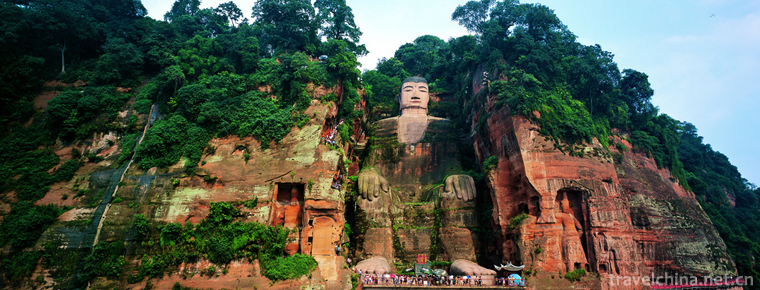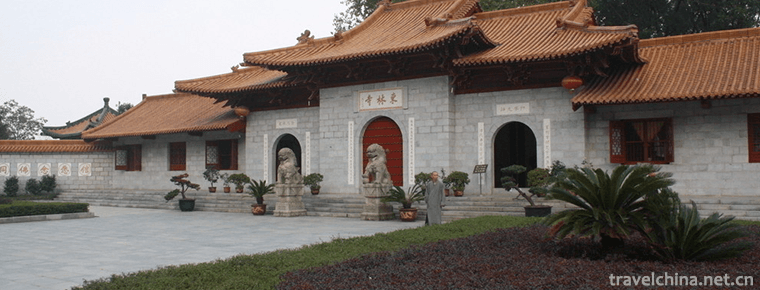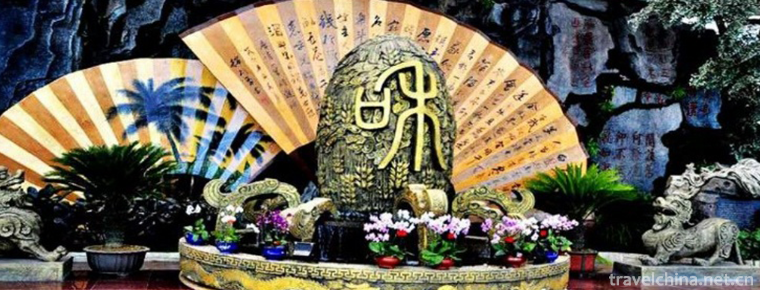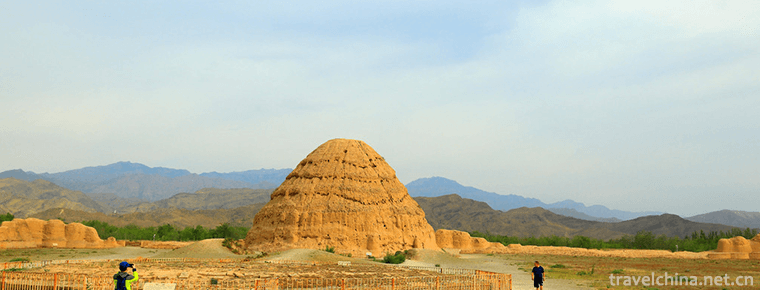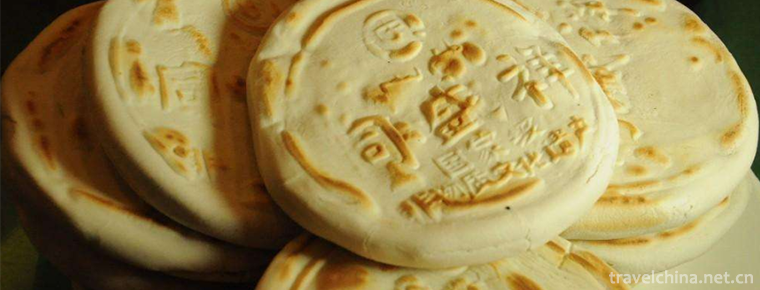Production Techniques of Yixing Purple Sand Pottery
Production Techniques of Yixing Purple Sand Pottery
Yixing Purple Sand Pottery Manufacturing Techniques, Dingshu Town, Yixing City, Jiangsu Province, local folk traditional pottery making techniques, one of the national intangible cultural heritage.
Purple clay pottery is made of a purple clay material with special aggregate structure and double stomatal structure, which is specially produced in Yixing. More than 100 kinds of self-made tools are used to finish the pottery through the steps of slicing clay, beating body barrel, inlaying body barrel or combining inlaying with sculpture.
In May 2006, Yixing purple sand pottery production technology was listed in the first batch of national intangible cultural heritage list of traditional skills, project number_-1. On May 24, 2018, it was selected as the first national catalogue of revitalization of traditional crafts.
historical origin
In 1976, a large number of purple sand pottery relics were unearthed from the Yangjiaoshan ancient kiln site in Yixing. According to the appraisal of the Department of History of Nanjing University and Nanjing Museum, the age of this ancient purple sand kiln site is the Northern Song Dynasty. In 1966, a purple sand pot was unearthed in Nanjing (the 12th Tomb of Jiajing, Ming Dynasty). Its purple sand sculpture and making techniques are in one continuous line compared with the pieces of Song kiln remnants in Yangjiao Mountain.
In Song Dynasty poets Ouyang Xiu and Mei Yaochen's poems, there are also poems about purple sand tea sets. In Ming Zhengde's years, the outstanding potters recorded in various documents included monks of Jinsha Temple and offering Spring Festival.
From Jiajing to Wanli in Ming Dynasty, Dong Han, Zhao Liang, Yuan Chang and Shipeng were the first four masters, followed by Dabin, Li Zhongfang and Xu Youquan. Among them, Shi Dabin is the most famous. His pot-making techniques have changed from the early ones to the hammer, ring, body-beating barrel and clay insertion, which is a leap in purple sand technology.
From the late Ming Dynasty to the Yongqian Dynasty of the Qing Dynasty (late 17th century to early 18th century), purple sand technology developed into decorative patterns and patterns. The Peach Cup (hidden in Nanjing Museum) by Xiang Shengsi in the late Ming Dynasty has fine production skills, perfect image and fine structure. The most prominent representative of this stage is Chen Mingyuan in the late Kangxi period, whose works are known for their skills and creativity.
In the early nineteenth century, the style of purple sand changed greatly. The key figure was Chen Hongshou, an official scholar. His contribution to purple sand pottery was the first time that seal carving was applied to pots as a decorative means. During the reign of Qingdaoguang and Xianfeng, Shao Daheng, a purple sand artist, won a high reputation for his exquisite mud selection, profound shape and superb skills.
During the War of Resistance Against Japan, the purple clay industry declined sharply. By 1948, there were only a few artists who could persist in purple clay pottery making, and the purple clay pottery craft which had been handed down for hundreds of years was in a precarious situation.
In 1956, the Jiangsu Provincial People's Government appointed seven purple sand artists, Ren Ganting, Pei Shimin, Wu Yungen, Wang Yinchun, Zhu Kexin, Gu Jingzhou and Jiang Rong, as "technical guidance". The cultivation of a new generation of purple clay artists and the inheritance of handmade purple clay pottery have begun.
As of 2012, about 20,000 people were engaged in the production of purple sand pottery in Yixing. The producers are not only Yixing local people but also foreign practitioners. They are also college students with specialized art education, artists who are teachers of the old generation of traditional artists, professors and lecturers, as well as specialist students.
Technological characteristics
Yixing purple clay pottery is represented by teapot. Its objects include light wares (circle dividers and square wares), ribbed wares and flower wares. Purple sand ware is generally glazed inside and outside, with pure natural texture and texture as the beauty.
Purple clay teapots have various shapes, simple and practical shapes, and strange shapes. However, they can be divided into the following categories: geometric, natural, ribbed, horizontal and tea pots. In different historical periods of the development of purple clay teapots, several types of pots have been manufactured, but at each time. The mainstream of the period lays particular emphasis on different shapes, artistic fashions and development trends.
There are various decorative methods of purple sand pottery. The seal carving of purple sand pottery decorative art is different from other carvings, such as lacquer carving, wood carving, inscription carving and other ceramic carving. It is carved on the surface of purple sand pottery. Attention should be paid to overcoming the rough and complex lines on the surface of pottery pottery. Although seal carving and painting is the last process of making purple clay pot, the selection of painting materials and brushwork are similar to Chinese traditional painting, that is, there are books and paintings, plus the painter's seal. However, in terms of layout, the art of purple sand pottery carving is different from that of traditional Chinese painting, because the art of purple sand pottery carving should follow the shape of purple sand pottery to draw separately, and requires clear pictures and distinct layers, which puts forward higher requirements for the artist's skills. Generally, painting and calligraphy are first written on the pot blank, and then on the basis of it. The paintings and calligraphy are used for seal cutting. When engraving characters, they should be horizontal and vertical, rounded, and the order of strokes should follow the law, so that the structure of calligraphy and painting corresponds to each other and the strokes are clear and clear.
The knife method used in seal cutting can be roughly summarized as "scratch, vertical, skim, kick, scratch" these five words. The knife method of "scratch" is first down and then up; the knife method of "vertical" is left and right; the knife method of "scratch" is first down and then down; the knife method of "kick" is first up and down; and the knife method of "scratch" is first up and then down. In addition to "double-knife forward entry" and "single-knife side entry", the knife method of purple sand pottery decoration art also includes astringent knife, late knife, retaining knife, light knife, cutting knife, dancing knife and so on. These are all the knife techniques used for gold and stone. Purple sand pottery decorative art works have unique techniques and ingenuity. The sculptors use knives as pens to bring together the ancient Chinese culture, such as calligraphy, traditional Chinese painting, seal carving and many other arts, which are rare and valuable, forming a unique national craft characteristics.
Purple sand pottery carving is based on knife as a pen, which integrates Chinese calligraphy, painting and sculpture. It has a wide range of subjects, rich contents and diverse forms of expression. There are many kinds of descriptive materials, such as natural landscapes, flowers and birds, figure patterns, etc. The decorative art works of purple sand pottery include all kinds of calligraphy in Chinese history, including cursive script, official script, regular script, etc., and also have graphics. It can be said that they are full of pictures and texts.
In addition to the most commonly used pottery carvings, there are kneading, painting, mosaic, decals, sand adjustment, clay painting, printing plate and so on. For example, inlaid with "mud inlay", "ceramic beads, glaze beads inlay", "snail, jade inlay", "gold and silver inlay" and so on. Mud painting is made of Purple mud piled on the pot blank, which has many shapes such as cranes, fish and figures. Printing board is to engrave the required decorative patterns on a plate made of wood, stone, pottery and so on, and beat the mud on it, so that the required decorative patterns are printed on the mud sheet, and then the pot blank is made of mud sheet. 。 In the decoration of purple sand pottery, no matter which method is used, it should play a role of icing on the cake.
Technological process
I. Billet Making
Molding and hand-holding
They are first made into the body, then dig the foot, open the surface, then attach the handle, mouth, cover, and other accessories, and finally do the workmanship.
Forming
Manual Forming Method
A Key: It lies in the "finishing" process of the surface of the pot blank. The so-called finishing is to use special tools such as open needles and bamboo fans to precisely trim the surface of the pot blank so as to make the structure of the pot body more precise and the outline more obvious.
Classification B: Body-beating and Slice-jointing
The body-beating barrel is the body-beating barrel of the pot body, mainly round.
"Slice joining" is the mud sheet inlay forming. When making a cube, slices of mud that have been laid and cut are bonded with mud to form a pot body (or bottle body or basin body).
Mold Forming Method
Firstly, the designer conceived and produced a purple sand pottery work, then turned out a mother mould according to the sample, and poured out a number of gypsum moulds for moulding technicians. When the slurries are formed and fired, a complete set of process flow including slurry washing, grouting, slurry return, demoulding and billet repair is needed.
Forming of Roller Car
This is also one of the ceramic mechanical forming methods. In the early 1960s, Yixing Zisha Technological Factory introduced the forming machine rollers to produce road goods.
Drawing Forming
In Yixing kiln yard, from ancient times till now, the drawing technique is seldom used. Only in the late 1990s, some foreign pottery artists applied the traditional drawing technique of porcelain area to the production of purple sand.
III. Decoration
The purple clay pot is decorated by drilling, adjusting mouth, mouth, handle, trimming spout, scraping shoulder, spout and handle, polishing the inside of the pot and stamping on the plate.
IV. Burning
The firing temperature of purple clay ware ranges from 1050 1250 C, which is between ordinary pottery and porcelain. The specific kiln temperature is determined by the mud property of the billet and the required ceramic color. The technological process is as follows: the green body is dried, packed into the box body, put into the kiln, and roasted.
Inheritance and Protection
Inheritance value
Yixing purple sand culture reflects the historical civilization of the Chinese nation. Yixing purple clay pottery production technology is a valuable form of folk traditional culture. Its technological process, utensil modeling, decoration, use and aesthetic concept have rich Chinese traditional cultural connotation, reflecting the wisdom of an Oriental National craft.
Purple sand has always been full of practical and artistic appreciation of the dual characteristics. After thousands of years of inheritance, purple sand pottery's living space, technical characteristics, derivative genealogy, traditional cultural connotation and so on, still present a good state.
Heritage figures
Wang Yinxian, female, Han nationality, born in 1943 in Dingshan Town, Yixing City, Jiangsu Province. In June 2007, Wang Yinxian was selected as the representative successor of the first batch of national intangible cultural heritage projects and declared in Yixing City, Jiangsu Province.
Xu Xiutang, male, Han nationality, born in December 1937 in Yixing, Jiangsu Province. In December 2012, Xu Xiutang was selected as the representative successor of the fourth batch of national intangible cultural heritage projects and declared in Yixing City, Jiangsu Province.
Lv Yaochen, male, Han nationality, born in 1941, Yixing, Jiangsu Province, is a master of Chinese arts and crafts. In December 2012, Xu Xiutang was selected as the representative successor of the fourth batch of national intangible cultural heritage projects and declared in Yixing City, Jiangsu Province.
protective measures
As the raw material of purple sand ceramics is a rare mineral resource, it has been overexploited and abused. With the influence of industrialization, there are fewer and fewer fine purple sand pottery products, and the outstanding purple sand pottery production technology has been seriously impacted. How to inherit this excellent folk handicraft has become an urgent issue to be solved.
In April 2007, the First Local Regulation for the Protection of Traditional Manufacturing Techniques, Mineral Resources and Purple Sand Products, the Regulation on the Protection of Yixing Purple Sand in Wuxi City, was formally implemented.
On January 21, 2018, Shanghai Museum of Literature and History, Institute of Works and Arts, set up a Zisha Culture Research Base in Yixing. The platform will actively carry out research, exchange, exhibition, publicity and promotion activities of purple sand culture, cultivate, discover and promote outstanding purple sand talents, in order to stimulate the innovative vitality of purple sand culture.
social influence
Important Exhibitions
On the morning of June 9, 2017, the first Yixing Ceramic Art Exhibition, a representative inheritor of intangible cultural heritage, was opened at the Yixing Ceramic Museum in China. The craftsmanship of purple sand pottery production in Yixing, Jiangsu Province, was displayed in the exhibition.
From November 22 to December 11, 2017, the "Ziyu Suyun" Zisha Culture Exhibition, sponsored by Jiangsu Overseas Friendship Association and Jiangsu Association Association of Hong Kong, opened in Hong Kong. The production techniques of Yixing Zisha pottery in Jiangsu Province were displayed in the exhibition.
Honorary recognition
In 1930, Yixing Purple Sand won the silver medal at the World Expo held in Belgium.
In 1962, Yixing Purple Sand won the gold medal at the World Expo held in Philadelphia, USA.
In 1988, Wang Yinxian, a non-hereditary successor, and Professor Zhang Shouzhi of the Central Academy of Arts and Crafts (renamed the Academy of Fine Arts of Tsinghua University in 1999) jointly designed Quju, which broke through the traditional purple sand pot style and won the first prize in the National Ceramic Design evaluation.
On September 21, 2016, in the 4th China intangible cultural heritage exposition held by Jinan International Convention and Exhibition Center in Shandong Province, four purple sand artists in Yixing City won the prize in the finals of the traditional craft project (ceramic handicraft molding) of the exposition.
Cultural anecdotes
Legend has it that in the Spring and Autumn Period and Warring States Period, Fan Li helped King Goujian of Yue to destroy Wu, and then retired from office to settle down in Yixing on the shore of Taihu Lake to make pottery happy with the local people. In the process of making pottery, Fan Li found that one kind of clay was slightly heavier than other kinds of clay, and it had a luster inside, so he named it "purple sand". But after all, it's just a legend, and there's no way to investigate whether it's true or not.

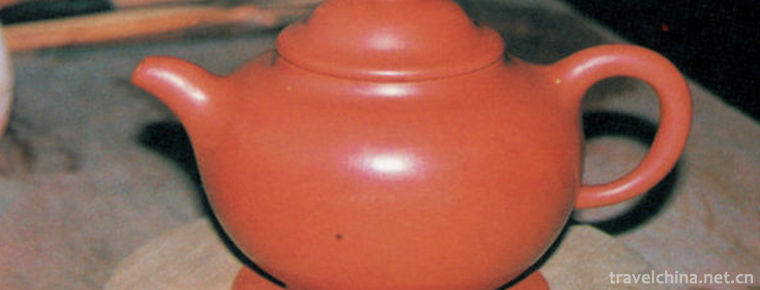
-
Leshan Giant Buddha
Located on the East Bank of Minjiang River in Leshan City.
Views: 165 Time 2018-10-13 -
Inner Mongolia Autonomous Region Alshan Chaihe Tourist Scenic Area
Inner Mongolia Autonomous Region Alshan Chaihe Tourist Scenic Area/Chaihe Tourist Scenic Spot has a total area of 1368.7 square kilometers.
Views: 167 Time 2018-12-02 -
Donglin Temple
Donglin Temple, located at the foot of Lushan Mountain, Jiujiang City, Jiangxi Province, is 16 kilometers north of Jiujiang City and 50 kilometers east of Lushan Luling Street. Because it is east of X.
Views: 124 Time 2018-12-20 -
south china botanical garden
The South China Botanical Garden of the Chinese Academy of Sciences, which belongs to the Chinese Academy of Sciences, is one of the most important botanical and ecological research institutions in Ch.
Views: 132 Time 2018-12-26 -
Mount Tais Flower Age
Taishan Flower Age Scenic Area in Tai'an City, Shandong Province, is a large-scale agricultural tourism cultural project with five functions of entertainment, sightseeing, picking, catering .
Views: 288 Time 2019-02-13 -
Western Xia imperial tombs
The Mausoleum of the Xixia Dynasty, also known as the mausoleum of the Xixia Emperor and the mausoleum of the Xixia Emperor, is the mausoleum of the successive emperors and the Royal Mausoleum of the .
Views: 107 Time 2019-02-25 -
Hit City drama
Dacheng Opera, a local traditional drama in Quanzhou City, Fujian Province, is one of the national intangible cultural heritage..
Views: 197 Time 2019-04-22 -
Brocade song
Brocade song, formerly known as Gezi or Shijin song, is also called begging tune. It was named Jinge in 1953. This is a form of singing accompanied by instrumental music. .
Views: 331 Time 2019-05-07 -
Production Techniques of Tongshengxiang Beef and Mutton Bubble
Tongshengxiang steamed beef and mutton steamed bun was founded in 1920. It was named Tongshengxiang with the meaning of "prosperity and auspiciousness". Its steamed bread is made of meat of .
Views: 182 Time 2019-06-21 -
Gongga Mountain
Gongga Shan, also known as Minya Konka, is located in the south of Kangding, Sichuan Province. It is the main peak of Daxue mountain. There are 45 peaks with an altitude of more than 6000 meters. .
Views: 117 Time 2020-10-13 -
Deyang first industry
In 2018, the sown area of crops in Deyang City was 477000 hectares, 533 hectares less than the previous year, a decrease of 0.1%. Among them, the sown area of grain crops was 311000 ha, decreased by 1525 ha, decreased by 0.5%; the sown area of oil .
Views: 125 Time 2020-12-14 -
Nanchong hydrology
Nanchong is rich in precipitation. The average annual precipitation is 1000 mm, excluding evaporation, the annual total water is about 4.191 billion cubic meters, and the average annual runoff depth is about 313 mm. The distribution of runoff depth is generally .
Views: 348 Time 2020-12-17
